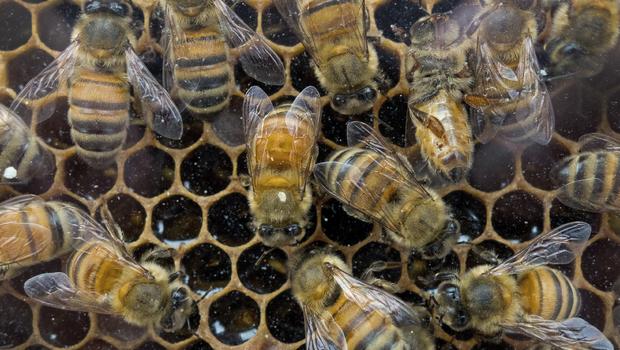One question that has had scientists buzzing in recent years is, "What is
killing the bees?" Many reports have documented the mysterious
decline in honeybee populations
around the world, with research focusing on possible causes including
parasites, a type of pesticide called neonicotinoids, and other factors.
Now, research out of the University of Exeter in the UK and the
University of California, Berkeley, reveals another explanation: the
spread of a viral disease, inadvertently helped along by humans.
The
study, published in the journal Science, found that European honeybees
are the main source of Deformed Wing Virus, which has spread through
bee hives around the world. The researchers determined that the spread
of this insect pandemic is largely fueled by human trade and
transportation of
bees.
How does it spread? The Varroa mite carries the disease, feeding on bee larvae, then the virus itself kills off the bees.
The
study's lead author, Dr. Lena Wilfert, of the University of Exeter's
Centre for Ecology and Conservation, said they found evidence that human
involvement has played a key role in the epidemic.
"If the spread
was naturally occurring, we would expect to see transmission between
countries that are close to each other, but we found that, for example,
the New Zealand virus population originated in Europe. This
significantly strengthens the theory that human transportation of bees
is responsible for the spread of this devastating disease," she said in a
press statement.
The research team examined sequence data of the virus samples
collected from around the world from bees and the mites that carry the
virus. They used this data to construct a path of how the virus spread,
determining that it traveled from Europe to North America, Australia,
and New Zealand. There was no movement between Asia and Australia, but
there was some back-and-forth between Europe and Asia. While they
examined other species of bees, they determined that the European
honeybee was the main culprit for the virus's spread.
"We must now
maintain strict limits on the movement of bees, whether they are known
to carry Varroa or not. It's also really important that beekeepers at
all levels take steps to control Varroa in their hives, as this viral
disease can also affect wild pollinators," Wilfert said.
Scientists
are concerned about the impact these mass bee deaths could have, not
just on biodiversity, but on human health and global agriculture.
"
Domesticated honeybee
colonies are hugely important for our agriculture systems, but this
study shows the risks of moving animals and plants around the world,"
co-author Roger Butlin, a professor of evolutionary biology at the
University of Sheffield, said. "The consequences can be devastating,
both for domestic animals and for wildlife. The risk of introducing
viruses or other pathogens is just one of many potential dangers."
© 2016 CBS Interactive Inc. All Rights Reserved.
